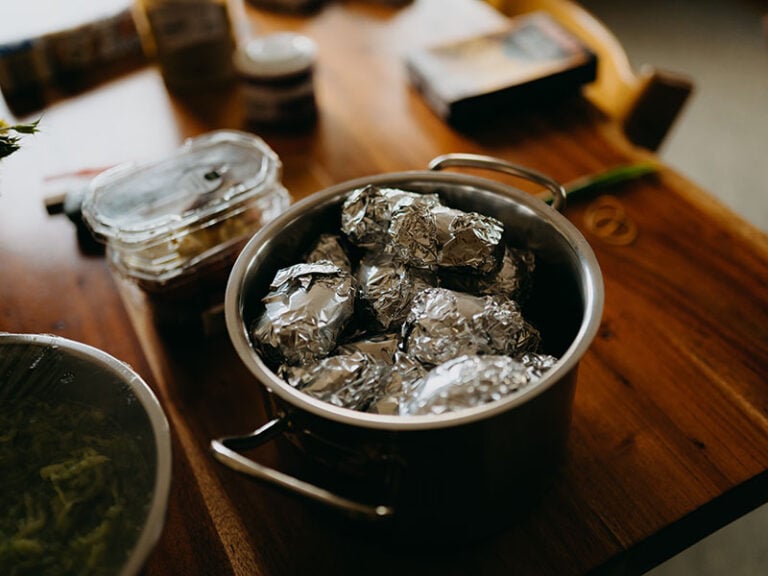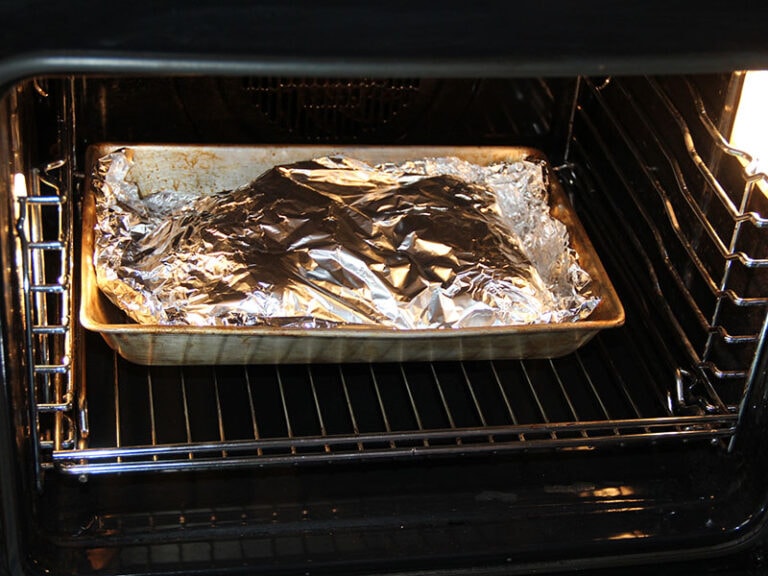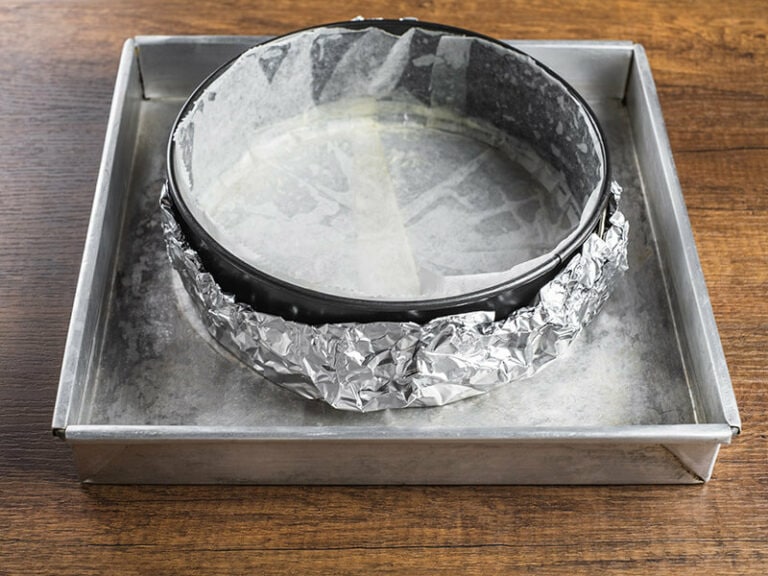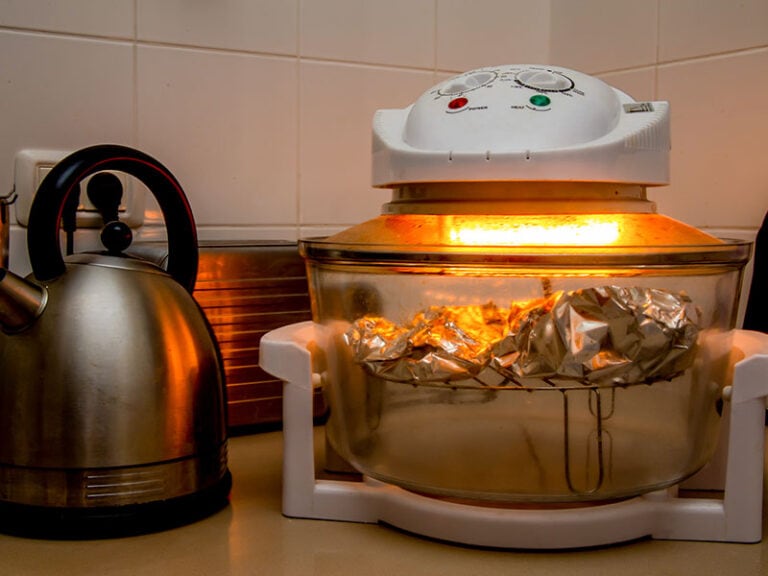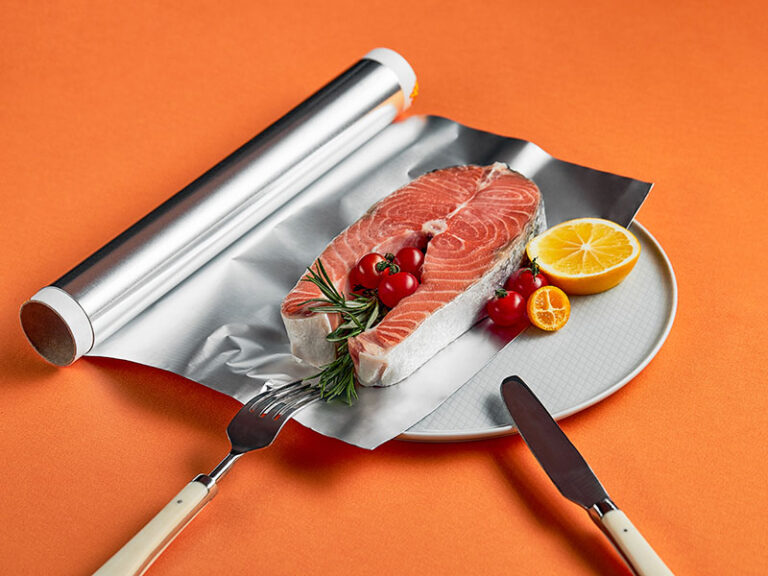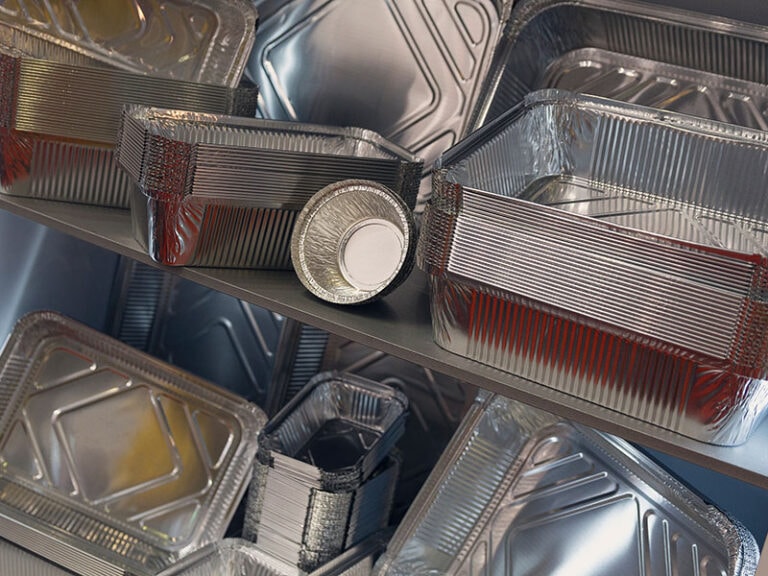Have you ever asked yourself, “How thick is aluminum foil’? Though the length and width of aluminum foil are usually shown on the packaging box, the thickness is somewhat hidden. Instead, they just labeled your foil as regular, heavy-duty, or extra heavy-duty.
The more knowledge, the better. You may need more information about the thickness of aluminum foils and their uses. Thereby, let’s get right into this in-depth post for a better understanding!
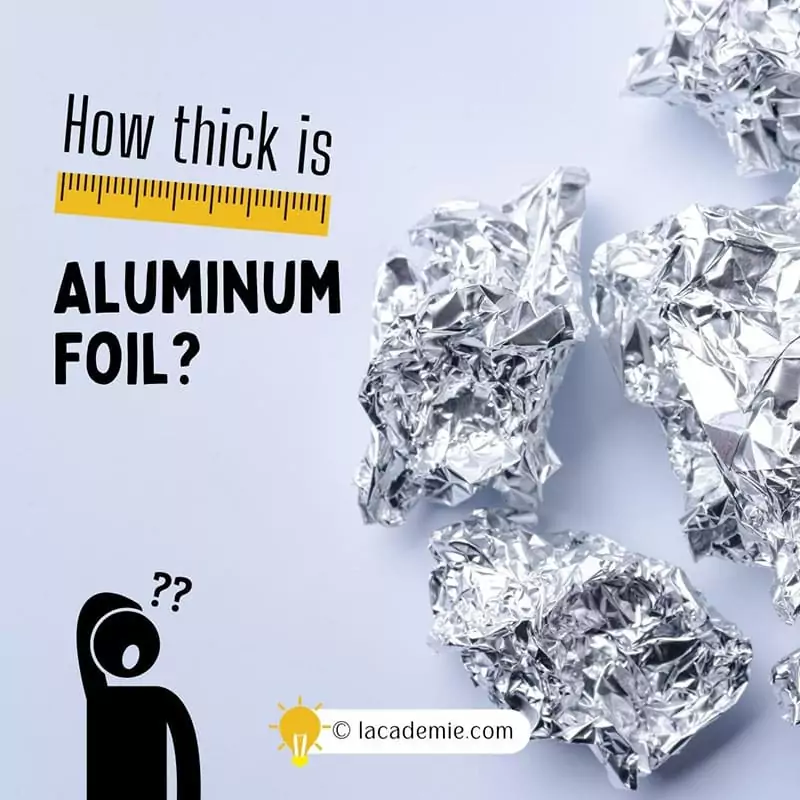
Aluminum Foil Is Various In Thickness
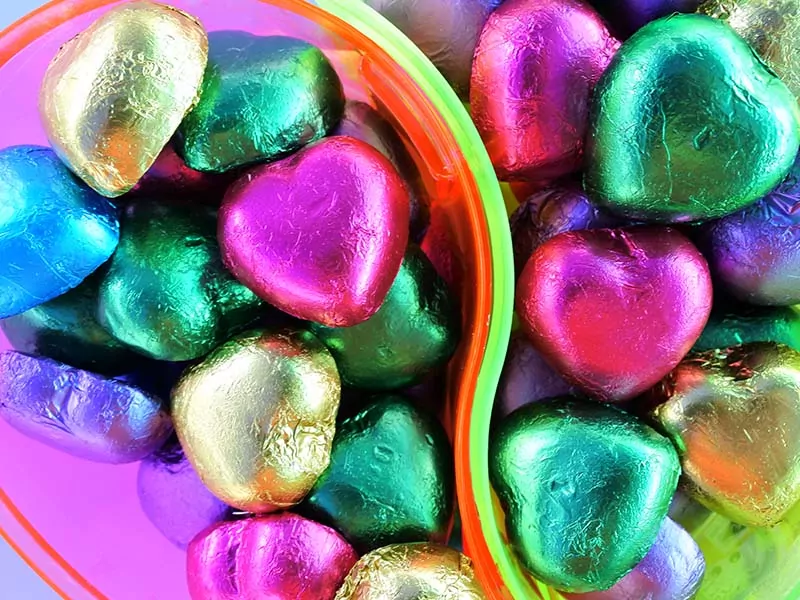
Aluminum foil is among the handiest kitchen tools nowadays, and they have a surprisingly wide range of thicknesses. You can easily find the standard aluminum foil in the market, along with the heavy-duty and even the extra heavy-duty.
However, there are thinner and thicker aluminum foils that you may haven’t known about, such as the extremely thin foil for decorative purposes or super-thick aluminum foil sheets that are usually used in factories.
Some Methods To Measure The Thickness of Aluminum Foil
If you’re curious about the thickness of the aluminum foil you’re in hand with, you can use micrometers to measure it. And you may be surprised to know how thin it is.
In fact, since aluminum foils are so thin, their measurement unit is usually Mil – a thousandth of an inch, or even micrometer – a millionth of a meter.
In case your micrometer isn’t appropriate to measure the thickness of aluminum foil, you can stack those thin foil in layers, then measure the stack. Then divide the thickness you’ve just got with the number of layers, and you’ll get the approximate thickness of your aluminum foil.
In addition, if you have no micrometer at all, you can calculate the thickness of your aluminum foil by this formula: thickness = mass / (length×width×density).
Keep in mind that the measurement unit has to follow each other in this formula; so it’s only centimeters OR inches, not using them both.
Check out the surprising thinness of aluminum foil with a micrometer.
It’s Vital To Pick The Right Rolls
It’s best to pick the suitable aluminum foil for your needs rather than just grab the nearest roll. And as there are many distinctions between aluminum foil and tin foil, careful observations will help you from accidentally choosing the wrong product.
What’s more, aluminum foil is designed in many different thicknesses to serve multiple using purposes; therefore, consider what you’re using it for before purchasing.
Technically, the thickness range of aluminum foil is between 0.006mm (0.24 mils) and 0.2 mm (8 mils). However, the most common rolls used for household purposes are no thinner than 0.016mm (0.63 mils) and no thicker than 0.04mm (1.6 mils) (1).
Although there are many dissimilarities between heavy-duty and regular aluminum foil, they both have some disadvantages. For some specific uses, you can use other premium types of them, such as nonstick foil and extra heavy-duty aluminum foil.
Since sticky is among the worst things of aluminum foil, you can now look for the nonstick rolls; it has been famous recently and is very easy to find. These rolls offer a silicone coating – which is safe for cooking – on one side to prevent stickiness.
Nonstick aluminum foil is also available in both standard and heavy-duty thicknesses. But if you’re tending to cook large-sized or heavy foods, consider using the extra heavy-duty aluminum foil.

With a thickness of around 1.1 mils to 1.6 mils, extra heavy-duty aluminum foil have perfect heat and tear resistance. You can even use this type of foil to make a replica of other utensils, such as a roasting pan or a cutting board.
However, the standard aluminum foil and the heavy-duty version are the easiest to be found at your local grocery store since they’re the most convenient to use in the kitchen. Let’s skip the chatting and get to know more about these aluminum foils!
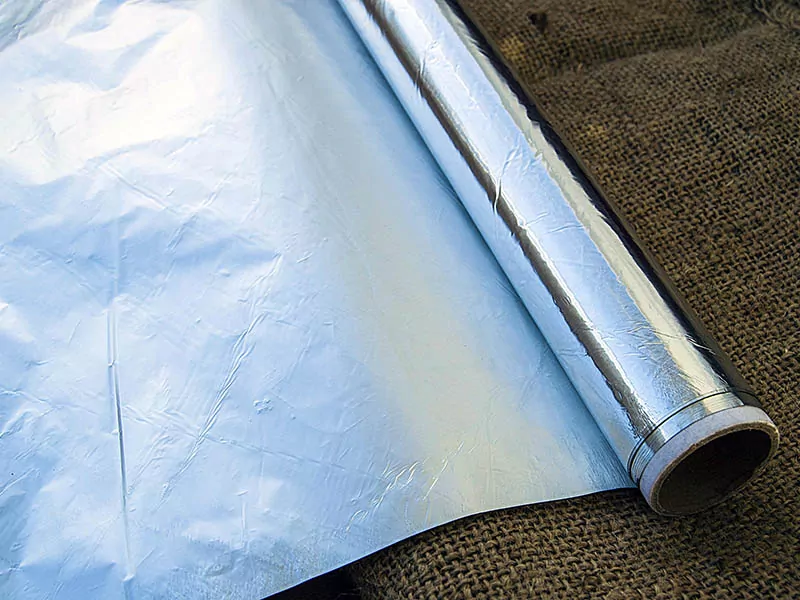
The Uses Of Standard Aluminum Foil
Any rolls labeled “aluminum foil” can be assumed as the standard household foil. The thinness of these foils is at least 0.63 in Mil, and they can be used in many food cooking or preparation methods.
Baking
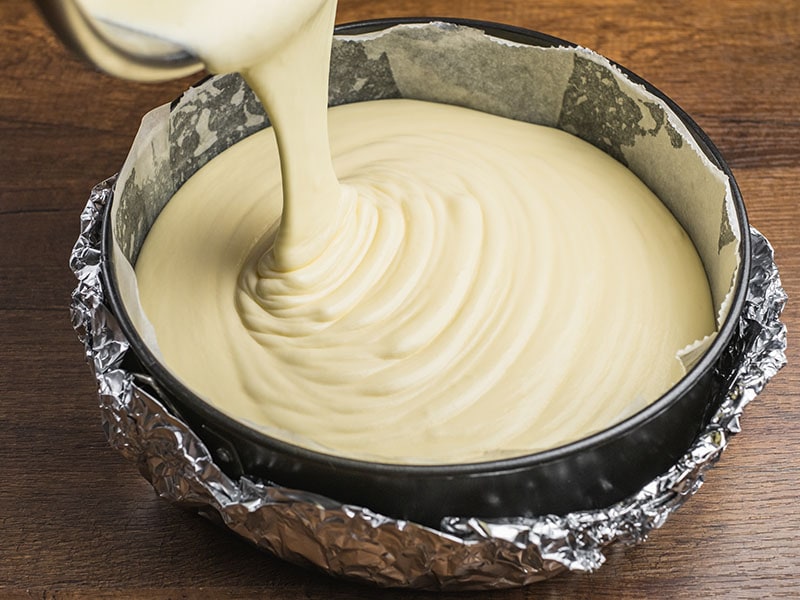
Are you wondering whether aluminum foil is safe to use in ovens? Indeed, it’s not an uncommon worry to have when it’s your first time using aluminum foil. Simple as this matter may seem, to many people, aluminum foil seems fragile enough that it can catch on fire easily.
However, due to its great heat conductivity, aluminum foil is often used in the oven. So if you can’t tell if you should use wax paper to bake cookies, opt for aluminum foil instead. You can also wrap your bakeware in foil before heating to form a better crust and reduce the baking time.
Another way to utilize aluminum foil in the oven is to wrap your foods; it’s the best method to retain the tenderness and juice inside the packet since aluminum foil is a perfect moisture locker.
Whether foil can go into crockpots might be a common question one might have, especially if they intend to use this to retain their food’s moisture in crockpots. However, after learning about aluminum foil’s main features, you probably already know the answer, right?
Storing
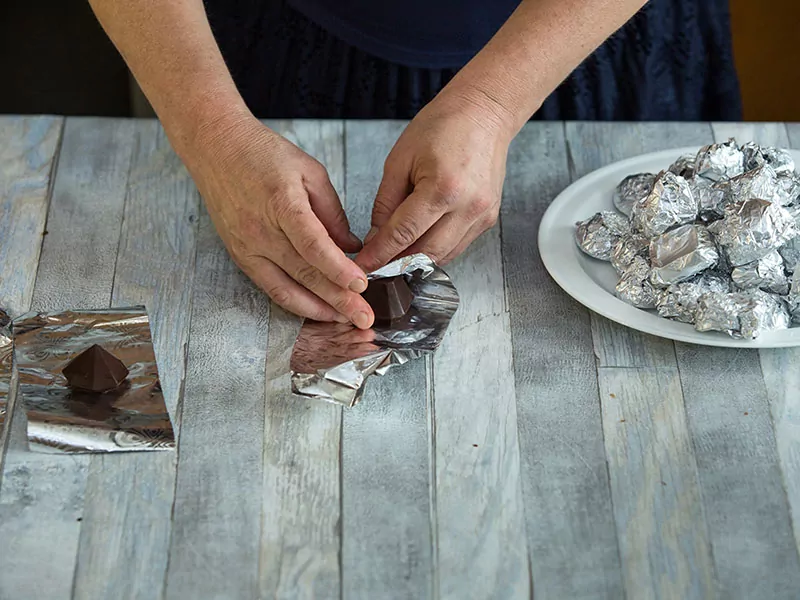
You can use aluminum foil to wrap your food for short-term storage, thanks to its perfect waterproofness. However, you should be cautious during the wrapping not to accidentally make holes on the surface since aluminum foil can be torn easily.
With foods that are sensitive to the surrounding elements like chocolates, aluminum foil wrappers will prevent moisture leaks in or out and the temperature changes. Therefore, their freshness and shape will remain better.
Serving
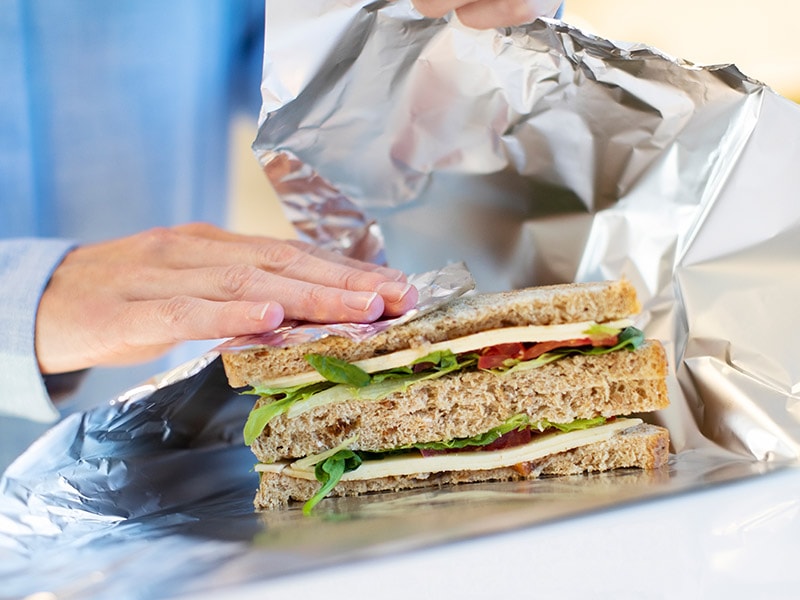
Aluminum foil is greaseproof; therefore, you can use it to prepare or serve greasy foods if you mind the cleaning.
Especially with meals that serve on hands, such as sandwiches or hot dogs, thin aluminum foil is the best choice if you want to wrap them to prevent your hands from touching the grease or sauces.
Since regular aluminum foil is thinner and much lighter, this is a rare case where it can outweigh the heavy-duty ones. Thanks to their affordability, you can also use them for decorating rather than being wasted on thick foil.
The Uses Of Heavy-Duty Aluminum Foil
Around 0.95 mils in thickness, heavy-duty can be considered as a premium version of aluminum foil. It can do almost all the regular foil jobs with a better result, and there’s no other way around.
As the name has suggested, the extra thickness of this foil helps it to withstand heavier duties.
Lining
If the cleaning job stresses you out, you can use foil as a liner on your appliances then toss them afterward. Though both standard and heavy-duty aluminum foil can tolerate high temperatures, the thin ones tend to be melted if you use them on high heat for a long time.
Suppose you’re using regular aluminum foil for lining the tray in order to put less effort into the cleaning job after baking; you’ll end up with a mess of grease and melted foil stuck on the tray.
However, you shouldn’t use aluminum foil to line the bottom of the oven since it can bring many harmful drawbacks, such as damaging the heat elements, uneven baking, or even burning possibility.
If you accidentally melted aluminum foil in the oven, here’s how to clean it.
Grilling
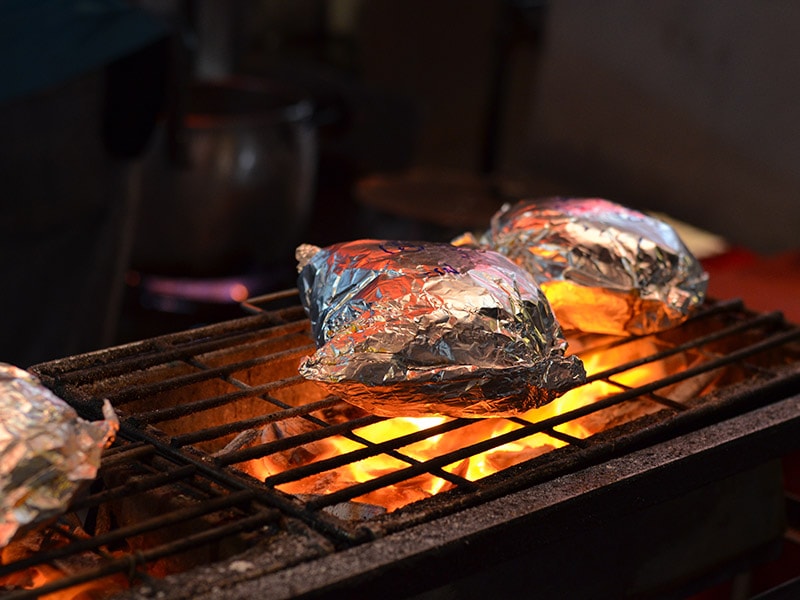
Heavy-duty aluminum foil has a higher heat resistance than regular; therefore, it can work better on open flames. Furthermore, its sturdiness would also help to “crutch” foods better so that it’ll be easier for you to handle your food on the griller.
Many prefer to use aluminum foil in grilling not only because they’re conducting heat better but also lock the liquid better than parchment or butcher paper. Preventing dripping juice onto your heating element will reduce the smoke coming out during the grilling process.
Covering
To prevent your food from exposing too much moisture during the grilling or keep the top parts from being overcooked during the baking, you should use aluminum foil as a lid or a tent to cover your food.
The reason why I recommend heavy-duty instead of standard aluminum foil in this method is because the regular foil is so thin that it tends to be blown away either by heat exposure or a sudden wind.
Check out a simple way to “tent” your baking turkey with aluminum foil!
The Harmful Consequences You Should Know
Though aluminum foil is a handy cooking tool, overusing it can bring some harmful drawbacks to your health and the environment, and there are even some cases where you shouldn’t use it at all.
Over Consuming Aluminum
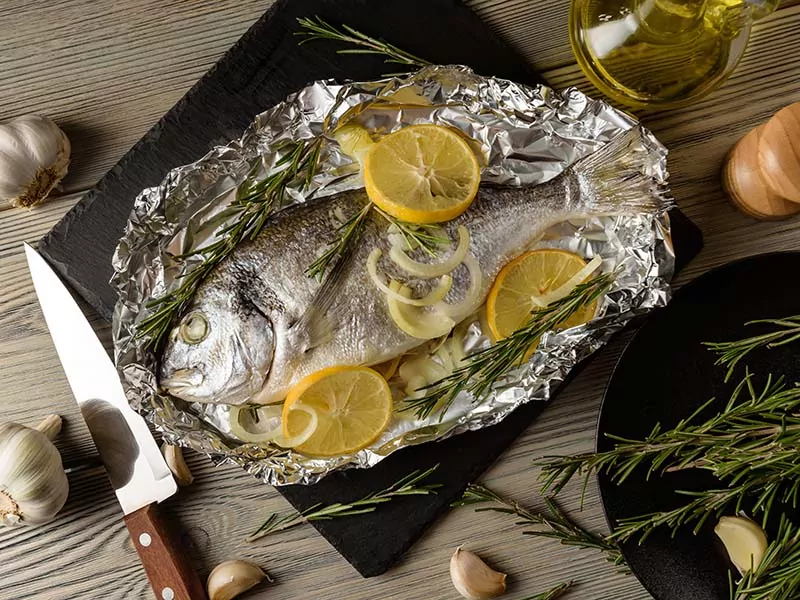
Though a certain amount of aluminum is always present in the human body, a high intake of this metal will bring harmful consequences to your health, such as bone and muscle pain in the short term, damaging kidney and brain tissues in the long term.
Unfortunately, aluminum foil has the highest chance to contaminate your foods than other aluminum kitchen tools due to its thinness. In fact, meat wrapped in aluminum foil can increase up to 375% aluminum rate after cooking (2).
The ratio of aluminum is even higher if you are cooking with aluminum foil on high heat or seasonings. Especially with acidic foods, aluminum foil will give a chemical reaction that increases leaching aluminum and alternate the food flavor with a metal taste.
Wasting Aluminum Foil
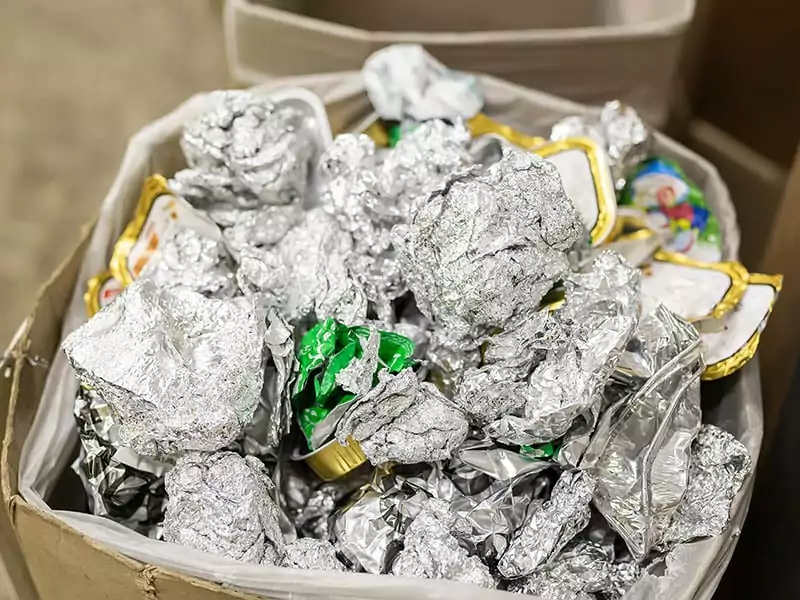
Unlike other aluminum products that can easily be recycled, the recyclability of aluminum foil is much lower since foods are usually stuck on them. And these wasted foils can last up to 400 years before it’s finally degraded (3).
Did you know that the wasted amount of aluminum each year in the US can build an aircraft?
Therefore, using less aluminum foil not only saves your health but also saves the environment. You can also reuse it several times if you’re able to clean it.
The Possibility Of Burning Or Even Explosion
Aluminum foil can withstand a significantly high temperature, about 1220F, so it’s nearly impossible to burn it. However, when it comes to whether aluminum foil is suitable for microwaves, the answer tends to become a lot more complicated than you may think.
If you put a crumpled aluminum foil in the microwave, no matter if it’s a regular or extra heavy-duty version, you’re facing a high chance of burning the house down.
Moreover, since aluminum is a perfect electric conductor, you might want to be careful using them with electrical kitchen tools. For example, the answer to if you should put aluminum foil in toaster ovens is not an outright no, it doesn’t mean you can do so willy-nilly.
Never put aluminum foil in a microwave to protect yourself and your family.
What Can You Use To Reduce Aluminum In Daily Life?
If you’re concerned about aluminum, you may notice that aluminum is present in many of your kitchen tools, not just foil. Therefore, it’s impossible and unnecessary to cut all aluminum products from your daily use.
However, there are other utensils that you can consider using instead of aluminum foil for some specific purposes.
Silicone Bakeware
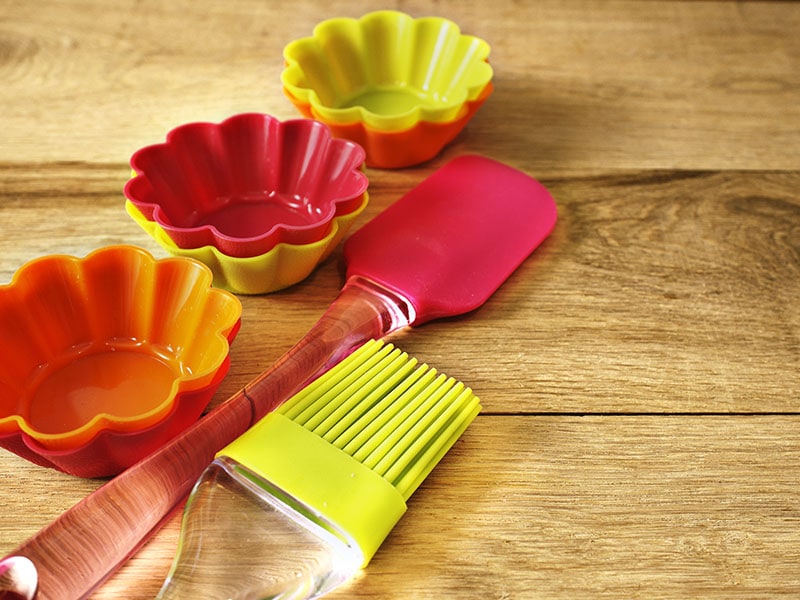
Silicone is a safe material for cooking; therefore, it has been designed into many utensils for multiple uses, such as liners, mats, molds, or bags. Furthermore, these bakewares are nonstick and easy to clean; therefore, it’s considered more affordable than aluminum foil.
One concern some might have about silicone bakewares is whether silicone bakewares can stay on oven racks. While most silicone bakewares have high heat resistance, it’s best that you check the manufacturer’s description carefully to utilize them properly.
Pink Butcher Paper
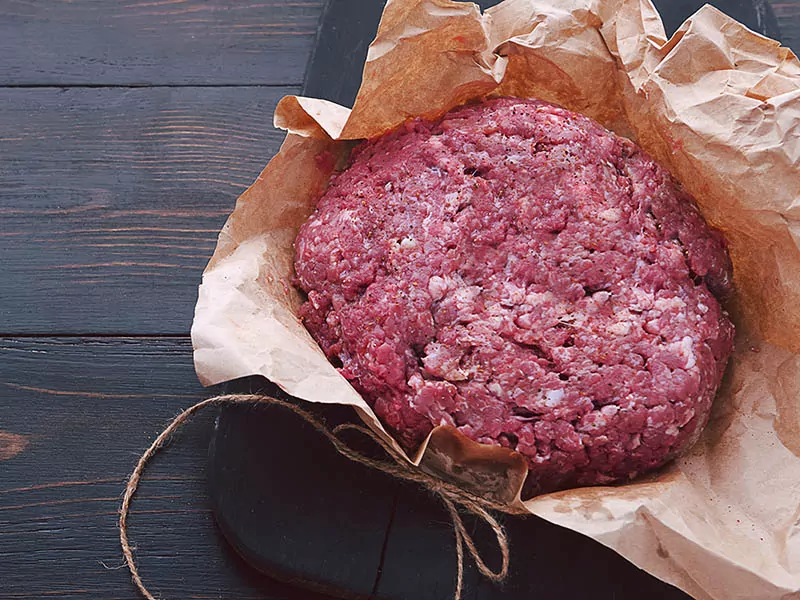
If you plan to use aluminum foil to test out the ultimate smoker dishes or scrumptious grill recipe, you’d better use pink butcher paper instead. As the name has suggested, this type of paper gives the best result for grilling and smoking meat dishes.
Parchment Paper
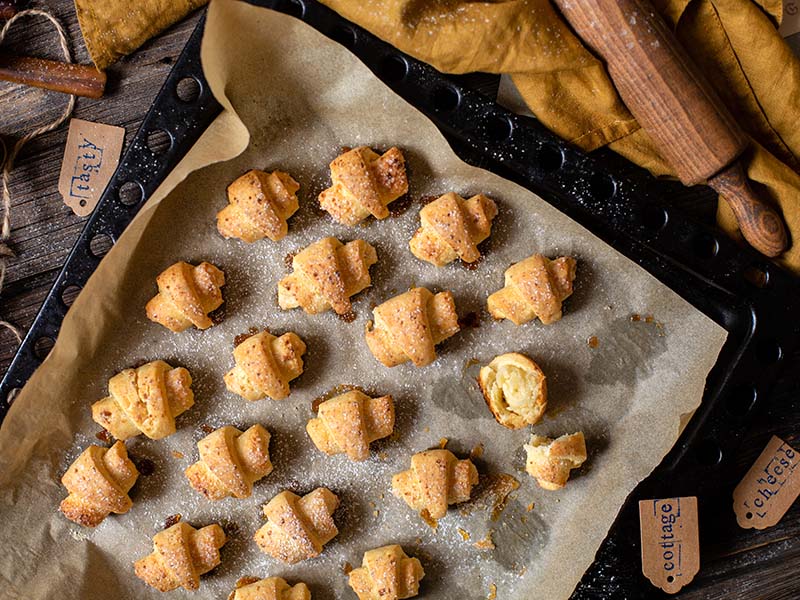
Instead of struggling with stick aluminum foil or paying more to get its nonstick version, you can simply use parchment paper. This is also a better option for storing methods since it’s harder to be torn. However, you shouldn’t use parchment paper on the open flames.
Can’t tell parchment paper apart from butcher paper? You can slather some grease on these two papers to tell which is which. If it absorbs grease, it’s butcher paper. If it doesn’t, then it’s parchment paper.
FAQs
At this point, I’m positive that you must have known how to pick the suitable aluminum foil for your needs. If there’s anything still blurring your mind, here are some of the most asked questions to clear it.
The Bottom Line: Think Twice Before Purchasing
After reading this article, you can see that there are multiple thicknesses of aluminum foil for each specific use. Depending on the cooking method and the food you’re about to cook, you can always choose the appropriate roll instead of just picking the nearest one.
However, keep in mind that overusing aluminum foil is not good for your health or the environment. Try to seek out substitutes for it if you’re able to.
Are you satisfied with the information? Share this article with your beloved people so that they can determine what their needs are before purchasing a new aluminum foil.
Don’t forget to let me and other readers know about your experiences with aluminum foil in the comment section! I’m positive that you might have some useful tips to share.
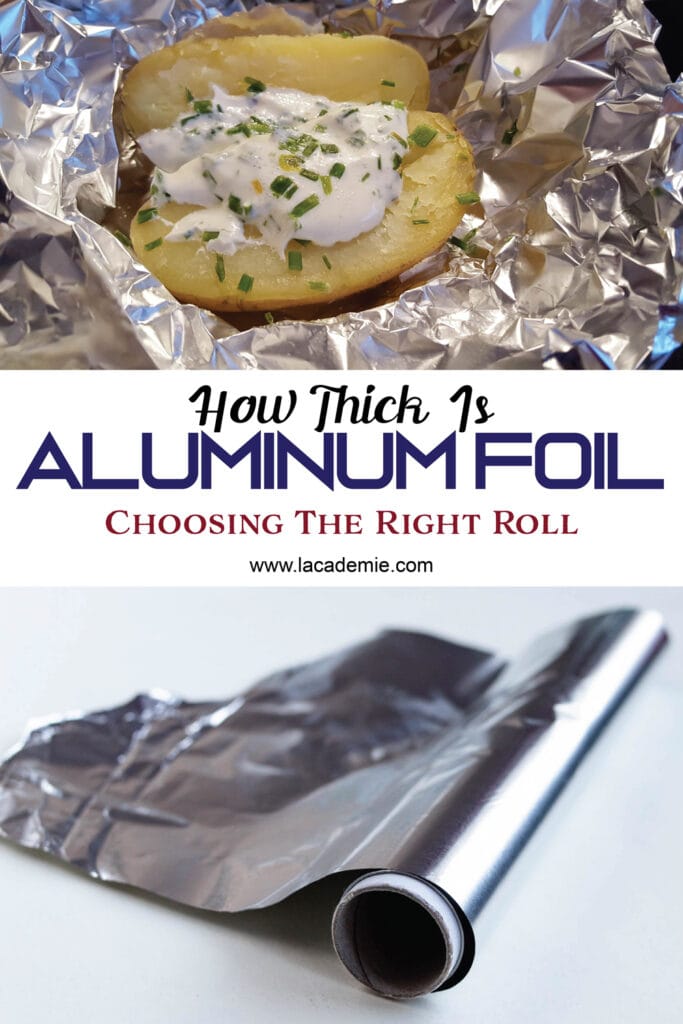
References
- En.wikipedia.org. 2021. Aluminium foil – Wikipedia.
- PMC, E., 2021. Europe PMC.
- Zone, T., Guide, R., Service, H., Recycling, C., and Trash, W., 2021.

